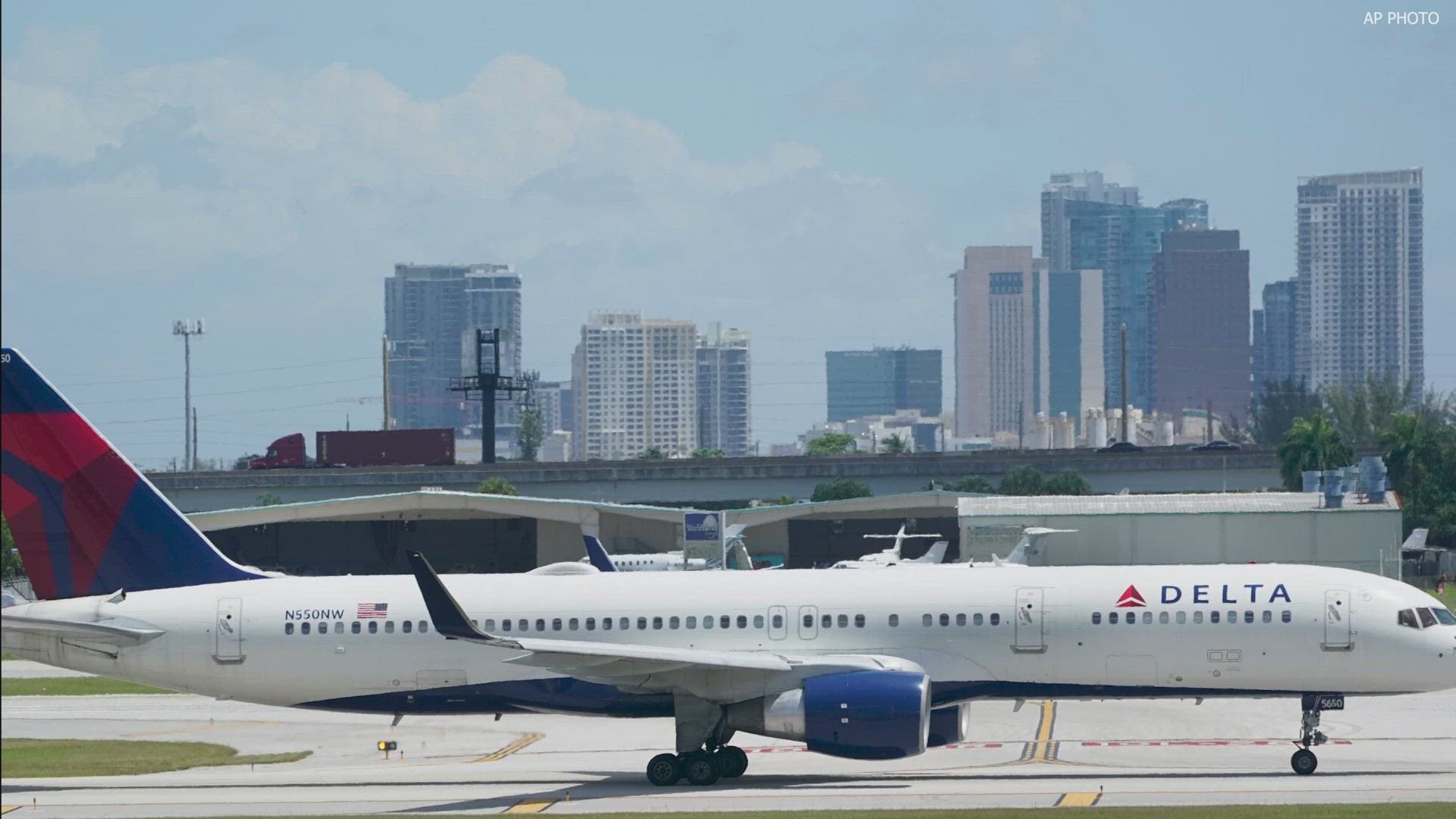ATLANTA — By now, we’ve all heard the unfortunate saga of how a Delta Air Lines flight bound for Barcelona was forced to turn around before leaving American airspace, because a swell of diarrhea seeping through the Airbus A350 that held 336 passengers.
“It’s just a biohazard issue, we had a passenger who had diarrhea all the way through the airplane so they want us to come back to Atlanta,” pilots could be heard explaining to air traffic control in a recording.
And it got a lot of us wondering: if you find yourself thousands of feet in the air and experience a similar medical debacle, what’s your next move?
While in-flight medical emergencies are rare, they do happen. With an estimated 6 million people in the air every day worldwide, a medical emergency while on a plane can be expected about once every 604 flights, according to a still-cited 2013 survey of five North American airlines conducted by the New England Journal of Medicine.
In the U.S. alone, there were an estimated 50 in-flight medical emergencies a day.
The top five medical emergencies on flights are passing out (37.4%), respiratory symptoms (12.1%), nausea or vomiting (9.5%), cardiac symptoms (7.7%) and seizures (5.8%). Of 10,914 patients for whom post flight follow-up data were available, 25.8% were transported to a hospital by emergency-medical-service personnel, 8.6% were admitted, and 0.3% died, according to the study.
If you experience a medical emergency on a flight, limited access to services exist. The Federal Aviation Administration mandates U.S. carriers flying domestically or internationally must have certain supplies on board. Those include an FDA-approved AED, first aid kit, and medical emergency kit easily accessible in the passenger cabin.
The bigger the plane, the more those kick up: there is 1 kit for 0-50 seats, 2 for 51-150 seats, 3 for 151-250 seats and 4 for more than 250 seats.
There are also lists of medications, along with gloves, needles, syringes, blood pressure cuffs and manual resuscitation devices, that must be in those sets according to the FAA. However some devices, like EpiPens, do not make the list.
Flight attendants are trained in a variety of first-aid maneuvers, including CPR and the use of AEDs. If you feel something is wrong with you physically during a flight, they’ll be your first point of contact.
While it used to be that airlines had few ways of contacting medical professionals if someone was experiencing an emergency during a flight, crews now have contact with emergency personnel on the ground who can provide guidance.
In June, Delta Air Lines was criticized after giving an empty oxygen tank to a passenger with a lung condition during a flight from Minneapolis to Chicago. In response, the company moved to shore up their onboard medical technology. MedAire's Medlink solution was added to many aircrafts, which gave crew members a direct link to doctors on the ground.
Doctors help in nearly half of the medical emergencies onboard. If you’re a medical provider being called on to help with an in-flight emergency and wish to assist, you will be protected on domestic flights with the 1998 Aviation Medical Assistance Act, which protects medical personnel from damages in federal or state court for providing good-faith medical care in the event of an emergency.
When responding to a medical emergency on international flights though, note AMAA protections may not apply. It can also be unclear which entity would have jurisdiction over liability for the care - the inbound country or the county closest to the aircraft’s current location.
The Center for Disease control notes most countries do offer protections for medical professionals who respond to emergencies.
AirRx is an app available on Apple and Android devices that was developed to prepare and help medical professionals volunteer to assist fellow travelers experiencing medical emergencies while in flight. Medical volunteers can use the app to access 23 of the most common inflight medical emergencies, with algorithms and information to help evaluate and treat the patients.
About 7.3% of inflight medical emergencies require a flight diversion.
Urgent treatments, resuscitation, continued treatment to maintain blood pressure are some of the most common reasons why a flight would be diverted and would not continue due to a medical emergency.
You can learn more about how cabin crews and airlines manage medical emergencies with guidance from the Aerospace Medical Association here.

